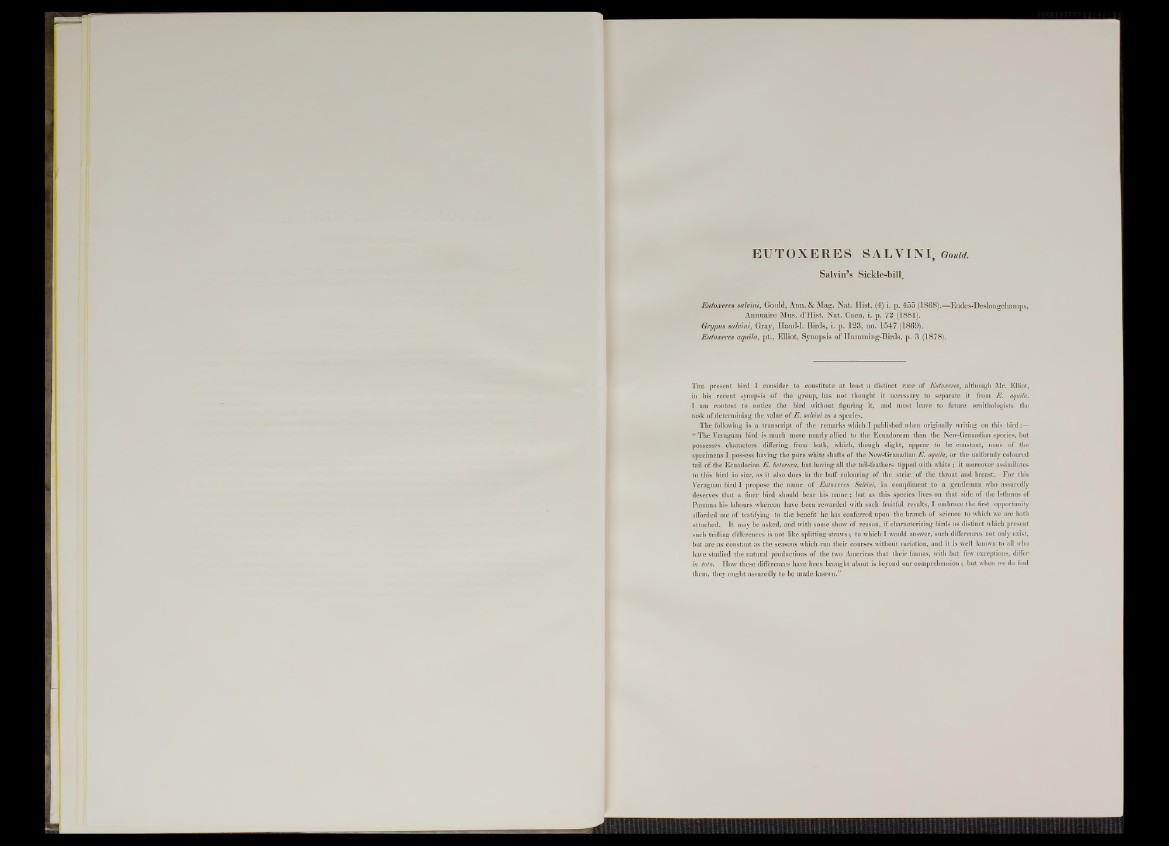
EUTOXERES SALVINI, Gould.
Salvin’s Sickle-bill.
Eutoxeres salvini, Gould, Ann. & M ag. N a t. H ist. (4) i. p. 4 5 5 (1868).— Eudes-Deslongchamps,
Annuaire Mus. d’H ist. Nat. Caen, i. p. 7 2 (1881).
Grypus salvini, Gray, Hand-1. Birds, i. p. 1 2 3 , no. 1 5 4 7 (1869).
Eutoxeres aquila, p t., Elliot, Synopsis o f Humming-Birds, p. 3 (1878).
T he present bird I consider to constitute at least a distinct race of Eutoxeres, although Mr. Elliot,
in his recent synopsis of the group, has not thought it necessary to separate it from E. aquila.
I am content to notice the bird without figuring it, and must leave to future ornithologists the
task of determining the value of E. salvini as a species.
The following is a transcript of the remarks which I published when originally writing on this bird:—
“ The Veraguan bird is much more, nearly allied to the Ecuadorean than the New-Granadian species, but
possesses characters differing from both, which, though slight, appear to be constant, none of the
specimens I possess having the pure white shafts o f the New-Granadian E. aquila, or the uniformly coloured
tail of the Ecuadorian E. heterura, but having all the tail-feathers tipped with white ; it moreover assimilates
to this bird in size, as it also does in the buff colouring of the striae o f the throat and breast. For this
Veraguan bird I propose the name o f Eutoxeres Salvini, in compliment to a gentleman who assuredly
deserves that a finer bird should bear his name; but as this species lives on that side of the Isthmus of
Panama his labours whereon have been rewarded with such fruitful results, I embrace the first opportunity
afforded me o f testifying to the benefit he has conferred upon the branch of science to which we are both
attached. It may be asked, and with some show of reason, if characterizing birds as distinct which present
such trifling differences is not like splitting straws; to which I would answer, such differences not only exist,
but are as constant as the seasons which run their courses without variation, and it is well known to all who
have studied the natural productions of the two Americas that their faunas, with but few exceptions, differ
in toto. How these differences have been brought about is beyond our comprehension ; but when we do find
them, they ought assuredly to be made known.”